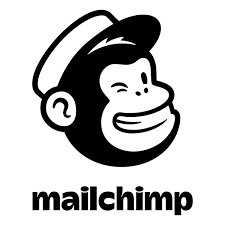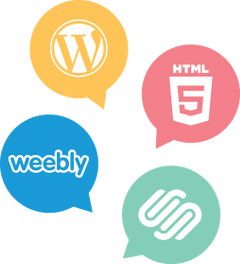Putting together an email newsletter can feel like a big production. First there’s brainstorming the list of topics; then there’s gathering research, writing and then actually laying out the enewsletter in your email service provider. And don’t forget the proofing, rounds of revisions and testing to be sure the email looks good across many email platforms. Finally, you’ll have to repeat this process in another month or whatever frequency you have set.
For organizations with no communications or marketing department, an email newsletter might be difficult to prioritize in the scheme of all that must get done. If you feel overwhelmed by the newsletter creation process, consider these alternatives, some of which are “set it and forget it” marketing activities.
1. Create an autoresponder series
 An autoresponder series is a sequence of emails that’s automatically sent out to people subscribed to your email list. It is the gift that keeps on giving. And it could be a better use of your time as more members will be likely to open it. As of 2023, email newsletters had a 27% open rate as opposed to 36% for autoresponders. See the latest numbers. Here are the basic steps to create an autoresponder series:
An autoresponder series is a sequence of emails that’s automatically sent out to people subscribed to your email list. It is the gift that keeps on giving. And it could be a better use of your time as more members will be likely to open it. As of 2023, email newsletters had a 27% open rate as opposed to 36% for autoresponders. See the latest numbers. Here are the basic steps to create an autoresponder series:
- Write a series on a specific topic. Ideas include case studies, an educational series, updates to build excitement about your big annual event, or an extended report on recent research. You can gather topic ideas by sending a survey to your membership list or by asking fellow staff and volunteers to identify your members’ most commonly asked questions. Or push the “Easy” button — you might already have past blog posts surrounding a specific topic that could be tweaked and repurposed as an autoresponder series.
- Use your email service provider’s autoresponder or automation feature to build your series. Each article in the series will be a separate email that is set to go out at an interval of time you specify. MailChimp has some great tips on crafting unique automated emails with superior open rates.
- Add a signup form that triggers your autoresponder. Your email marketing platform can help you create code to embed an autoresponder sign up form on your website. The form can be tied to an email list. You will want to give your website visitors some compelling reasons to sign up for the series. If you’d like other ideas beyond creating a signup form, MailChimp offers a large list of automated email triggers (now known as Customer Journeys).
2. Write blog posts on your website that are automatically emailed to subscribers
 The technology behind this automation is called RSS, which means Really Simple Syndication. How automated RSS-to-Email works:
The technology behind this automation is called RSS, which means Really Simple Syndication. How automated RSS-to-Email works:
- Your website creates an RSS feed. WordPress websites come with an RSS feed by default. The feed is comprised of your blog posts, and you have a separate feed for each blog post category.
- Email marketing platforms like MailChimp provide RSS email templates that use an RSS feed link from your blog. You can set up your campaign to send at different dates or times. You can select a list or a group within your list to receive this campaign.
- You write a blog post on your website.
- The post is sent out by your email marketing system to your list or group according to the date and time settings in your automated RSS-to-email campaign.
Writing blog posts that are automatically sent to your membership list is better than sending an enewsletter in some cases because:
- A post doesn’t need to be designed in an email marketing platform each time. With an RSS or blog-based email template, you’ll design it once and then it will be ready to use automatically each time.
- Information reaches subscribers sooner than if you waited to create an enewsletter with multiple articles.
- If recipients are just as likely to open one email from your group as another email, why put so much effort into an enewsletter?
- Headlines from your blog posts (which should be set up to populate the email subject line) are more click-worthy than subject lines like “Our Monthly Newsletter.”
Advanced ways to use RSS-to-email campaigns:
- If your content is for members only, you can set the blog-to-email template to send out an excerpt and then add the member only shortcode (for websites using our WordPress membership plugin) or HTML5 snippet (for our Weebly and SquareSpace membership plugin users as well as others) to your post on your website. In this case, members will need to use your login form to see the full post because you have put content restrictions in place.
- You can allow your members to choose which categories of blog posts they want to see on your blog post signup form. It’s a good idea as members will be more likely to open emails on topics that they are interested in than broader messages. Flip RSS works with Mailchimp to facilitate this process. FlipRSS reports that their users see click through rates up to 750% higher than the industry average.
- Some organizations use this feature as a way to create a job bank where job posts are emailed out to members who request them. You can use your membership management software to restrict access to job bank posts or pages that should be available to members only. A job bank is a good member benefit and can encourage prospective members to upgrade to a paid membership.
If you want to implement one of these advanced ideas but feel it is too daunting or technical to execute, consider hiring an email marketing agency to handle the setup. Note that MembershipWorks doesn’t offer support for MailChimp other than assisting with integration questions.
3. Post updates on social media
 For news-related items, social media is a great way to get the word out on topics such as membership events, association news and more. Blog posts make great social media posts.
For news-related items, social media is a great way to get the word out on topics such as membership events, association news and more. Blog posts make great social media posts.
One thing to note of course is that not all members will necessarily see every post you make on Facebook, Instagram, X, or LinkedIn.
Creating groups on social media such as a Facebook or LinkedIn group will help your messages get seen more than just posting on your primary account or page. If you want to create a group, see a comparison of Facebook groups vs. LinkedIn groups to help you decide which platform would be more useful to your organization. Also learn why you would choose to use a Facebook group or a Facebook page.
Follow best practices in email communications
 It’s important that every aspect of your online interaction with members is responsive. Research shows that 54% of nonprofit emails are read on mobile. Design your emails in a platform that uses mobile-friendly email templates.
It’s important that every aspect of your online interaction with members is responsive. Research shows that 54% of nonprofit emails are read on mobile. Design your emails in a platform that uses mobile-friendly email templates.- Test your emails by sending them to yourself as well as colleagues before sending a campaign to your full membership. Things to check:
- Is your text still readable? The font size shouldn’t be too small to read when viewed on a mobile device.
- Are large images “breaking” your email and making the text too hard to read on a smartphone? Some email marketing platforms will automatically scale images appropriately while others will not.
- Check that you don’t have images with text in them where the text becomes too small and unreadable when viewed on smaller devices.
- Look at your emails in a variety of platforms such as Gmail and Outlook on both desktop and mobile devices. Services such as Litmus will generate screenshots of your test emails in the most widely used email programs.
- Check your email stats in your email marketing platform after each message is sent. Are your unsubscribe rates trending upward? If so, you may want to send less frequent messages and consider other reasons for the trend.
- Write compelling, researched content and publish it on social media or as blog posts. If subscribers find your content invaluable, they will be more reluctant to unsubscribe.
- Make it easy to subscribe to your email communications by having a popup on your website, adding a signup form to your website’s footer or blog post sidebar, and/or adding a signup button on Facebook.
- Set up integrations to keep email addresses flowing into your email marking system. Integrations will help you avoid having to manually upload email addresses into your email marketing provider on a recurring basis.
- Be sure that your emails have an unsubscribe link as well as location information to help you comply with the CAN-SPAM Act.
Use MailChimp integration
 If you are a MembershipWorks customer, you have the ability to integrate your membership list and MailChimp. Some customers choose to upgrade to the Premium MailChimp Integration to gain finer control over the integration between MembershipWorks and MailChimp. The Premium integration allows you to:
If you are a MembershipWorks customer, you have the ability to integrate your membership list and MailChimp. Some customers choose to upgrade to the Premium MailChimp Integration to gain finer control over the integration between MembershipWorks and MailChimp. The Premium integration allows you to:
- Connect multiple MailChimp lists.
- Have a list connected to multiple folders and/or labels.
- Option to synchronize list – remove emails when a member is removed from a folder or label.
- Option to exclude contacts from list – contacts under an account will not be added to the list unless they specifically have that label.
- Connect an event or form to a MailChimp list.
Also check out the Help article on MailChimp; it goes over how to set up MailChimp in MembershipWorks. You can find it under Help > Integrations > MailChimp > Connecting To Your MailChimp Lists. You can upgrade to the Premium MailChimp Integration in Organization Settings by clicking on the Renew, Upgrade or Update Billing button where you can select the Premium MailChimp add on.




Comments are closed.